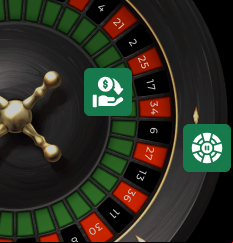How the 4567 system works
You’re probably wondering how this strategy got its specific name, especially if you know that neighboring numbers on the roulette table differ from those on the roulette wheel. The number sequences are distinct to the roulette wheel. If you try to cover as many pockets on the race track with several neighboring numbers and the maximum number of pockets that do not overlap each other on the roulette table and you’ll see that it’s problematic. To avoid long experiments and extensive trial and error, we’ll reveal all the combinations.
The following sets of numbers have neighbors in common:
- 3, 4, 5, and 6
- 4, 5, 6, and 7
- 15, 16, 17, and 18
- 16, 17, 18, and 19
- 17, 18, 19, and 20
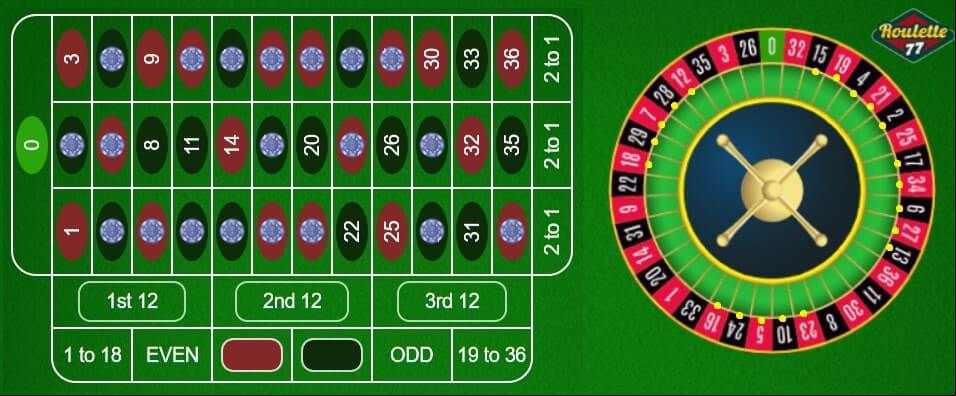
By using the 4567 pattern, bettors cover the minimum distance between neighbors on the race track - which is 7 units. By doing this, the occupied pockets on the roulette wheel would be distributed as evenly as possible, which is why the strategy received this name in the first place.
In fact, the strategy itself is much easier to explain than its origin. It follows a simple algorithm that goes:
- We first bet on the neighboring numbers 3, 4, 5, and 6
- If we ball lands on a number other than these, we increase the bet by one unit.
- If we win, we reduce the bet by one unit, but we make sure that it doesn’t fall below the minimum bet
- When winning, we need to maintain the progression of bets but change the pattern to 15-16-17-18. We do this with all the patterns, including 16-17-18-19, 17-18-19-20, and 4-5-6-7, and the subsequent bets and we play by following the last pattern.
Essentially, we place 20 straight-up bets and wager 1 unit on each of them. The patterns are, statistically, the same regardless of the sequence. Each of the patterns consists of 20 numbers, and the probability of winning is 54% all the time. In the case of winning, the payout is 16 units all the time. So, regardless of the algorithm of the patterns, the statistics remain the same.
Putting the 4567 system to Test
We’re aware that the 4567 strategy sounds very confusing to many, which is why we were eager to do this test. For our test, we set up the math model of the strategy in Google Sheets by inputting the probabilities of winning, the progression algorithm, and the payout ratio. To test how it performs, we decided to create 3 simulations with a starting bankroll of AU$1,000 and run 1000 spins. The graph depicts the dynamics of the bankroll throughout the session.
This is how the first simulation went:
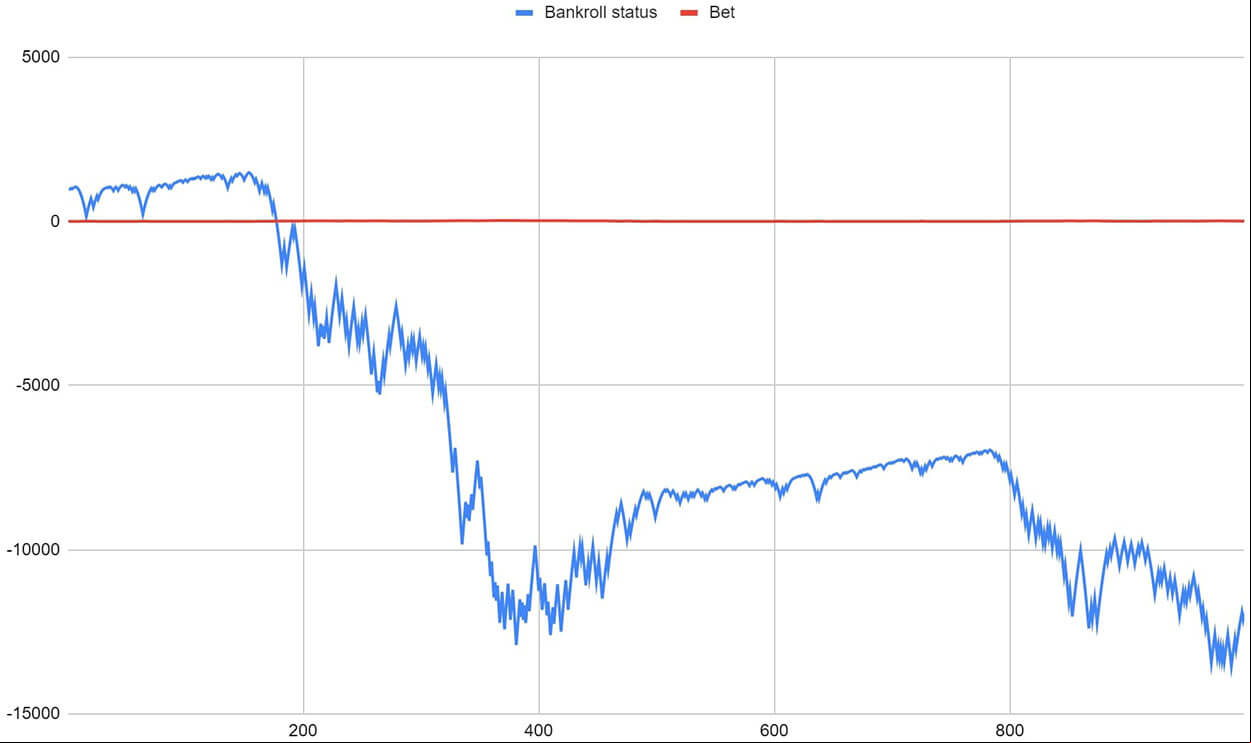
The decline happened so fast that the bankroll was depleted by more than 10-fold. Check out what happened on a larger scale:
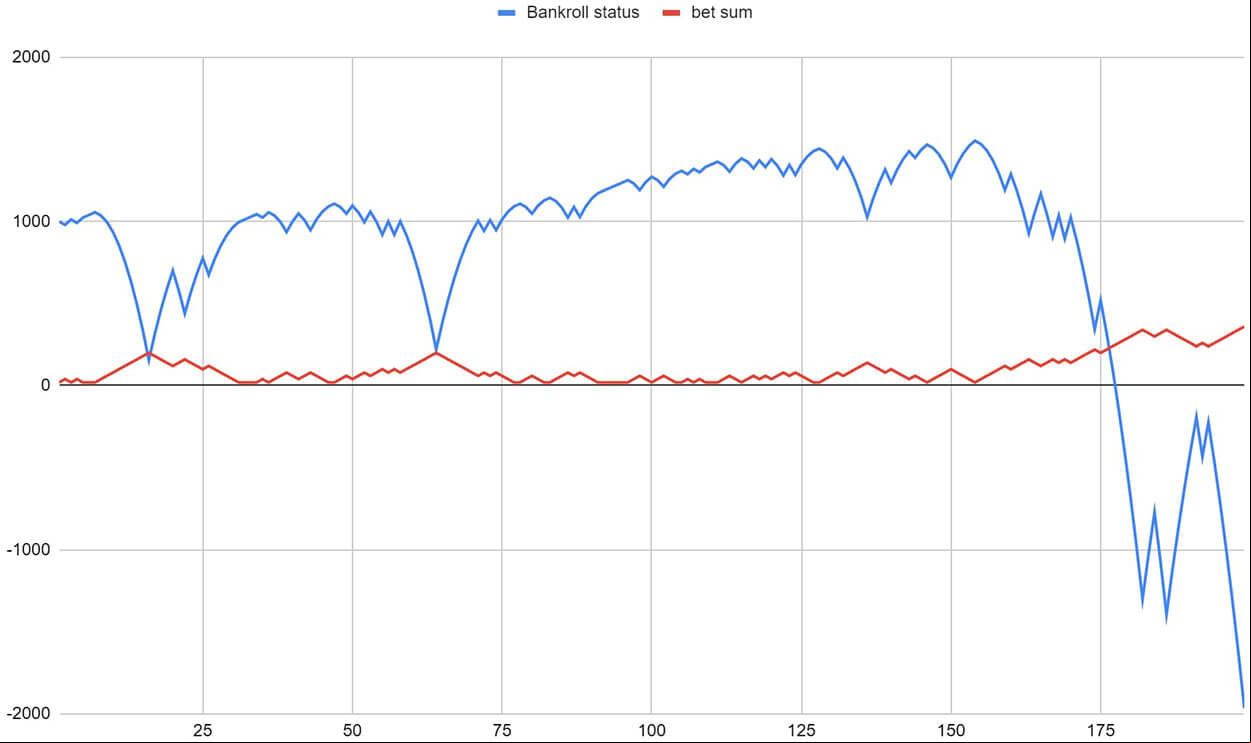
The first simulation showed a massive drop in bankroll, but let’s see what happened in the second and third simulations.
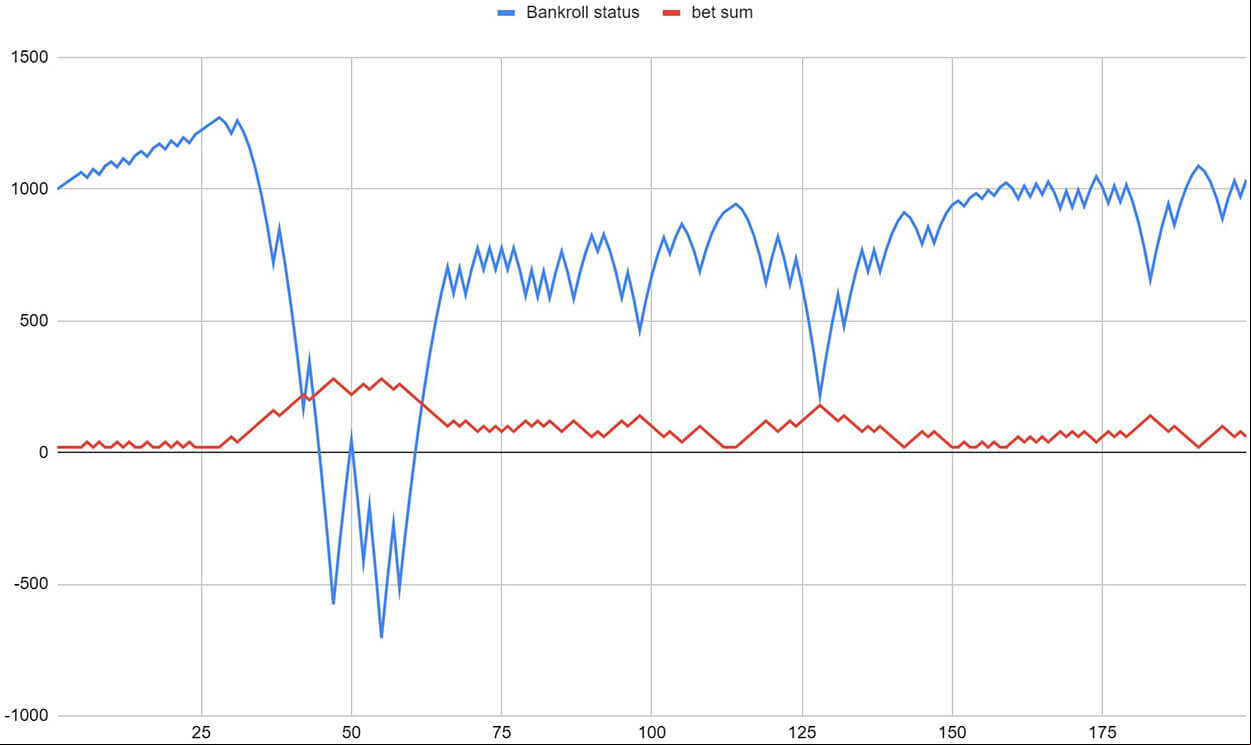

As you can see from all three simulations, the bankroll zeroed out rather quickly. Although the unit size is just AU$AU1, the strategy suggests that we progressively increase the bet by AU$1 unit in case of a loss - which means that the bet value gradually accumulates. The starting value is 20 units, which means that the bet increases by another AU$20 if you lose. In theory, you might get lucky and get a small profit within the first 10 spins, but in the long run, the strategy will deplete your bankroll.
Pitfalls of the 4567 System
The biggest shortcoming of the 4567 system is the fact that it depletes the bankroll rather quickly. Since we’re betting on 4 neighbors in one turn, it accumulates to a total of 20 straight bets. Moreover, we up the bet size by 1 unit for each bet each time we lose, which means that a long session can be quite costly.
The success is questionable even for a short session. The probability of winning is 54%, but there are strategies with bigger winning probabilities.
Conclusion
It’s hard to understand why this strategy exists in the first place - or why would we bet on specific neighbors’ patterns because betting on any 20 straight-up bets has the same winning probability. But more importantly, the strategy failed in the long run and drained the bankroll very quickly.
The 4567 may be useful in the short term, but only within 10 to 20 progression spins.
If we do the maths, the strategy fails to deliver even without using a progression in the bet value. With a winning probability of 54%, there will, theoretically, be 540 wins and 460 losses for 1000 spins, which equals to 8640 in winnings and 9200 in losses.
The strategy is not effective and if you compare the results with other strategies, you’ll see that the 4567 system doesn’t have any advantages.












